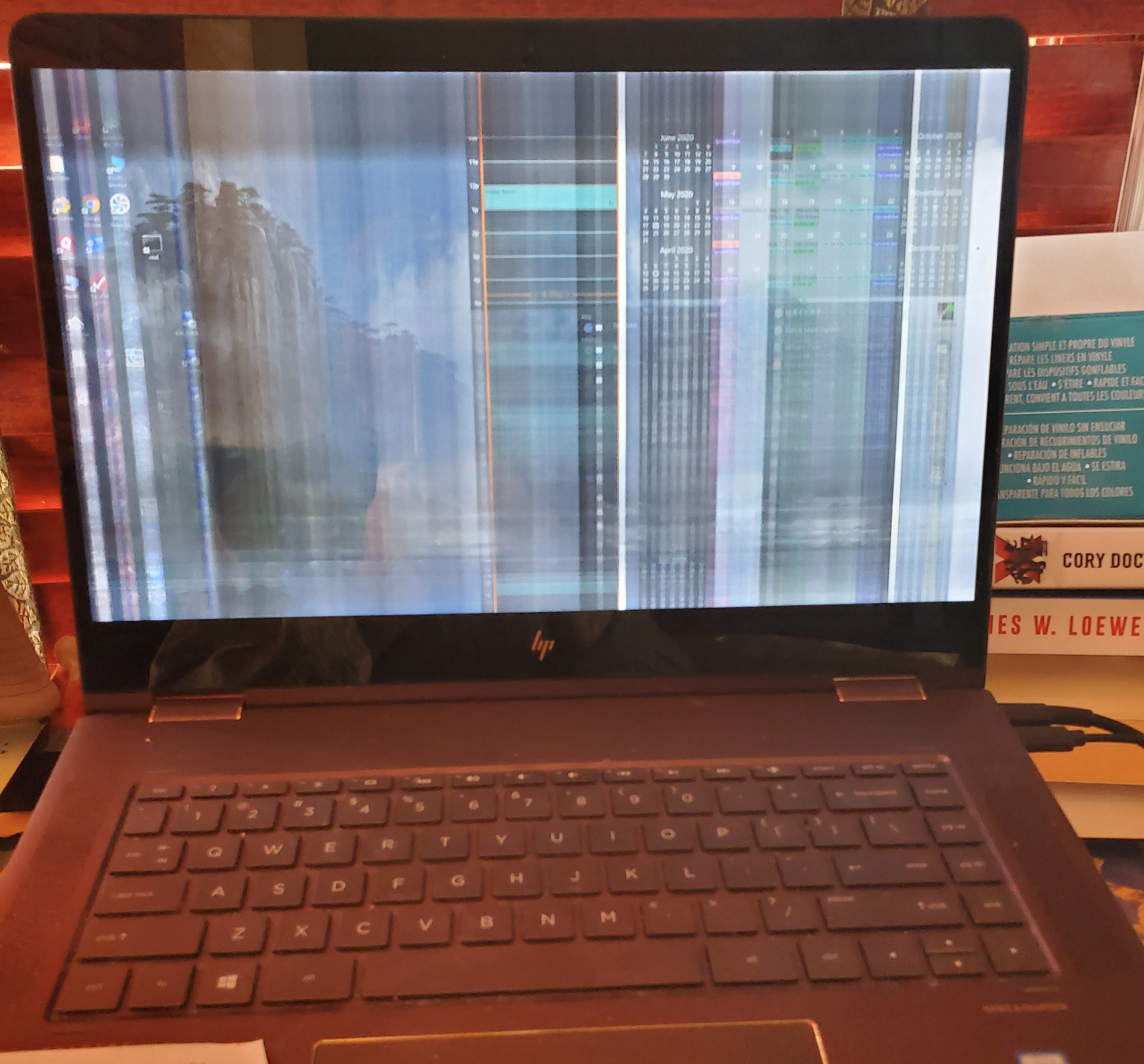I’ve always considered my laptop to be an expensive dog. The performance is poor. There are many awkward features. It cost too much money to be a brick in less than two years.
Recently I started encountering a debilitating problem. The laptop screen goes into “flicker mode” which cannot be fixed. This mode is always associated with a Windows 10 Update overnight.
Flicker mode looks like a scan rate mismatch. I can generally make out things on the top of the screen, but the bottom of the screen is totally lost in the flicker fog. Since the Windows 10 May update, the flicker is accompanied by a buzzing or screeching noise.
Here is what works for me
Plug in a 2nd monitor so I can see the screen. Using the 2nd monitor, set your display settings are to go to sleep mode when lid is closed. So make sure Closing the Lid puts it into Sleep Mode. This fix does not work with Power Off, Display Off, or Hibernate It must be Sleep Mode when lid is closed.
Plug the laptop in, and close the lid for Sleep Mode. Wait 60 seconds. Then open the lid to see if it come up without a flicker. If this does not work, try it 2-3 more times and waiting one extra minute each time; i.e. wait 2 minutes, 3 minutes. If it still does not work, let it charge to 100% in sleep mode, then open the lid. It will come back without the flicker.
NOTE: Turning the laptop off, and fully charging it, and then turning it on will not work. Putting it in Sleep then immediately opening the lid will not work. The laptop must be fully charged, then put into Sleep mode for at least 60 seconds, to turn on without a flicker.
Why I think this works.
The Intel UHD drivers appear to have a power saving mode. I notice it goes into “flicker mode” if my battery is low or not 100%. I am guessing that the Intel 620 driver is sensing a need to save power, and moderating the scan rate to do it. However, the Windows 10 Drivers do not handle the scan rate the Intel Chip has chosen. The result is the UHD driver is setting a scan rate that Windows 10 cannot handle. So the only way to get around it is to convince the Intel chipset that the Laptop is at full power so it does not try to engage the power saving mode.
What I have tried
There are many forums about screen flicker. Some of these are more obvious problems. For me, the problem is that there are three sets of video drivers available – HP has a set, Intel has a set, and Windows 10 has a set. You can go to each of these tools and they try to update. But none of the updates will help the problem one bit.
Here is HP Tech Takes. None of these things work.
Here is Intel Downloads for Graphics – This does not work.
Here is a long thread of Frustrated Customers – and none of these ideas work.
Here is a thread for Lenovo and None of these things work.
This solution uses Intel Graphics Control panel, and it does not work.
Summary
This problem affects all laptops with QHD screens because they all use the same Intel chipset. Intel knows the real problem and the solution. They just do not want to tell us. I’m pretty sure it is a power management mode that is baked into the chip and can not be overwritten by a driver.
I use an External Monitor sometimes, and that seems to have an influence. I keep my brightness at 100% when plugged in, and this seems to have an effect. The screen flicker never happens when power is 100%. But it happens when during the day the power fails to keep up with my screen usage, my power drops to 97% and lower, and then the next time the display is blanked out, it will flicker.
For me, the flicker is very debilitating making the laptop unusable. I have owned laptops for 30 years, and none of them bricked less than 2 years from purchase. I would say – never buy HP – except that online searching shows this Intel UHD problem affects all 4k laptops regardless of the vendor. I really like the 4k screen, so I just hope Intel can get their act together, become honest with their customers, and at least tell us how to permanently fix this issue.
Good luck!
